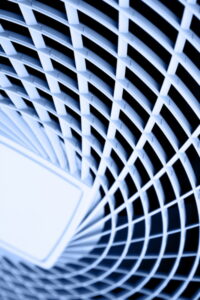Picture yourself on a warm summer evening, as the sun dips below the horizon, casting a gentle glow across the land. The air outside carries a hint of freshness, a promise of respite from the sweltering heat that has permeated your home throughout the day.
It’s in these moments that a whole-house fan emerges as your silent companion. Here at Redding Heating & Air we believe in giving you the comfort of your home. Let’s take a look at why a whole-house fan might be right for your Redding, CA, home cooling solution!
What Is a Whole-House Fan?
A whole-house fan is a ventilation system installed in the attic or ceiling of a home to help cool the entire house. It is designed to draw cool air into the living space and push hot air out, providing natural ventilation and reducing the need for air conditioning.
The fan typically consists of a large, powerful motor connected to a series of blades or vanes that move the air. When the fan is turned on, it creates a powerful suction force that pulls air from open windows and doors into the house. The air then circulates throughout the living space and is expelled through vents or attic vents, carrying out hot air and promoting fresh air intake.
Whole-house fans are most effective in moderate climates with cooler evenings and nights.
How Whole-House Fans Work
A whole-house fan works by creating a powerful airflow that draws cool air into a home and expels hot air in the following way:
- Installation: A whole-house fan is typically installed in the attic or ceiling of a home. It is mounted in a central location to ensure optimal airflow throughout the house.
- Opening windows: Before turning on the whole-house fan, it’s important to open windows on the lower level of the house. This creates a pathway for fresh air to enter.
- Turning on the fan: When the fan is switched on, it starts spinning its blades or vanes. These blades are designed to move a large volume of air quickly.
- Air circulation: As the fan operates, it creates a strong suction force. This force pulls cool air from outside the house through the open windows and doors, and into the living space.
- Expelling hot air: As the cool air enters the house, it displaces the warmer air inside. The warmer air rises and is expelled through vents or attic vents, promoting the removal of hot air from the house.
- Cross-ventilation: The whole-house fan facilitates cross-ventilation by drawing air in from one side of the house and expelling it from the other side. This helps to evenly distribute the cool air throughout the home.
- Operating duration: Whole-house fans are typically used during the evening or early morning when the outside air temperature is lower than the indoor temperature. The fan can be run for a specified period to cool the house, and then turned off once the desired temperature is reached.
How a Whole-House Fan Will Help You
A whole-house fan can provide several benefits to homeowners. By using the natural cooling power of outside air, whole-house fans can effectively lower the indoor temperature and provide a cost-efficient alternative to air conditioning, especially in regions with favorable climate conditions.
Here are some ways they will make your life easier:
- Energy efficiency
- Improved indoor air quality
- Comfortable cooling
- Natural ventilation
- Cost savings
- Environmentally friendly
If you’re ready for a whole-house fan installation in Redding, CA, give the professionals at Redding Heating & Air a call and schedule your appointment today!


